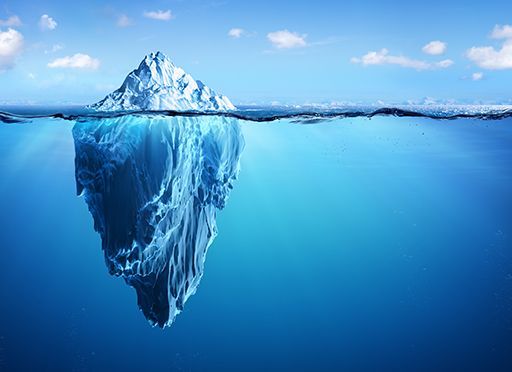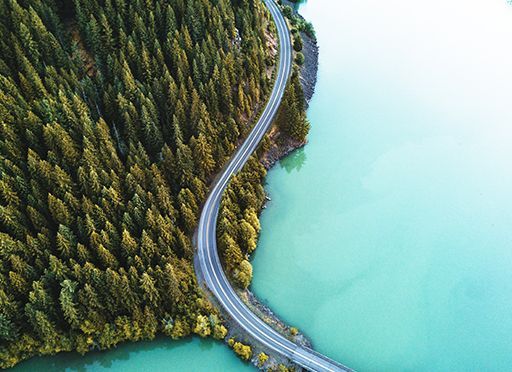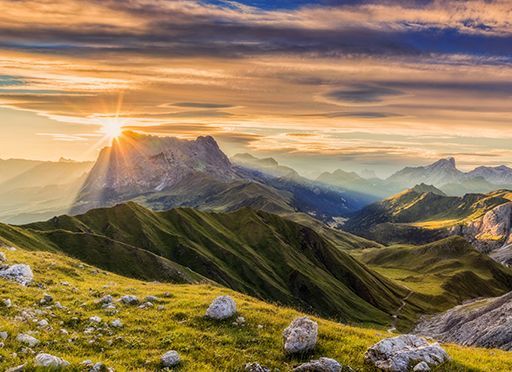Too Much Water, and Not Enough
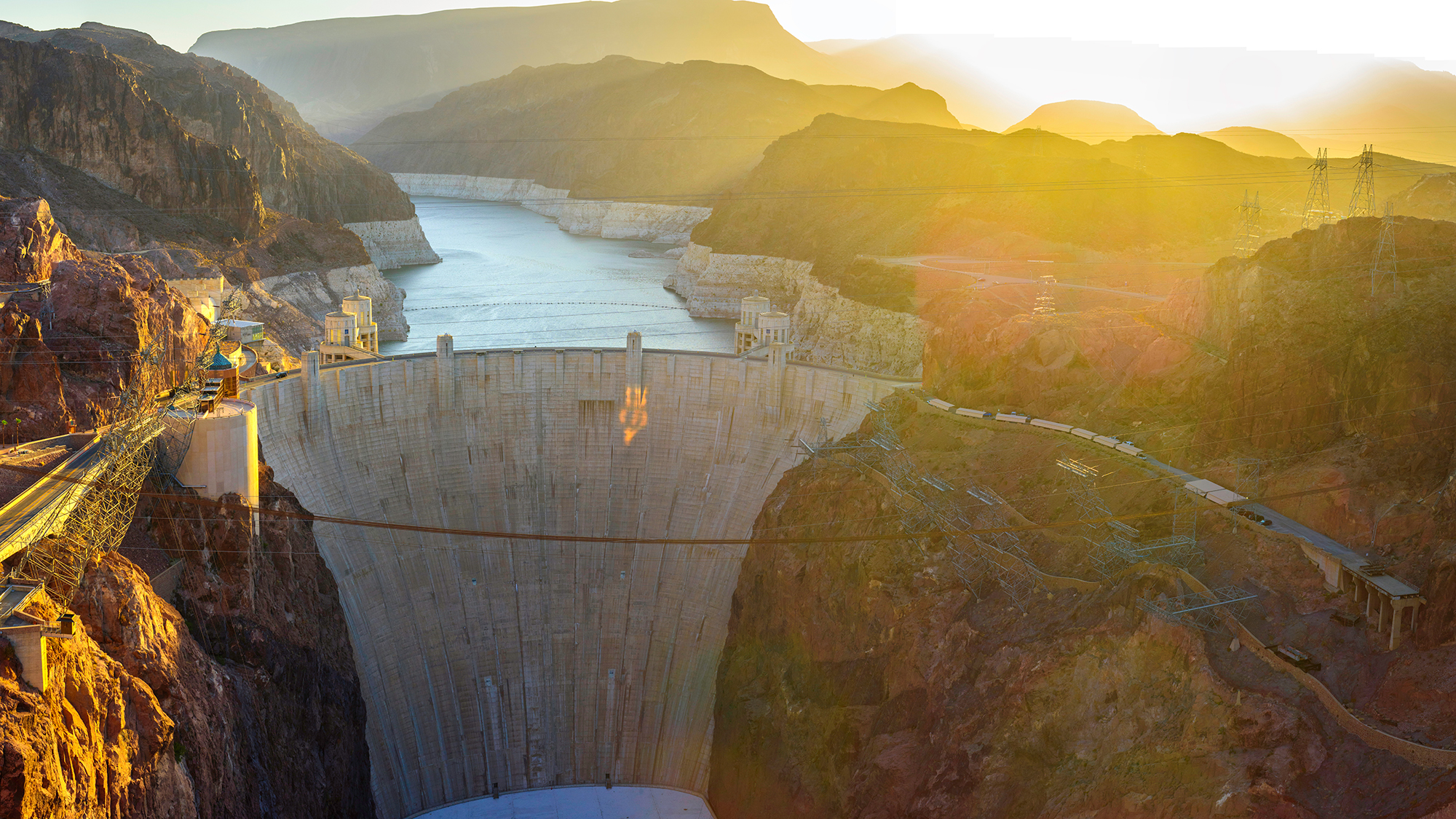
In Greek myth, the gods punished Tantalus by making him spend eternity in water up to his neck. Yet every time he tried to take a drink, the water receded. It was exquisite torture: to be surrounded by water, yet remain perpetually thirsty. In effect, this is the situation that humans have created for themselves as global temperatures continue to rise due to climate change.
The Tides Keep Rising
Perhaps the most oft-reported ramification of climate change is rising seas. Increased global temperatures cause the oceans to expand and also glaciers to melt, raising sea levels. Unfortunately, recent science shows the temperatures in the Arctic are increasing at twice the rate of the rest of the world, accelerating predicted timelines for adverse climate change impacts by decades. As glaciers at the poles melt, so does permafrost in the northern hemisphere, in place for millennia, exposing previously contained methane along with an estimated 800 gigatons of previously sequestered carbon. As new ocean trade routes open up, the melt also exposes new opportunities for mining and oil drilling, which will, in turn, lead to more warming. Permafrost melt also exposes the world to long-forgotten and potentially deadly microbes.
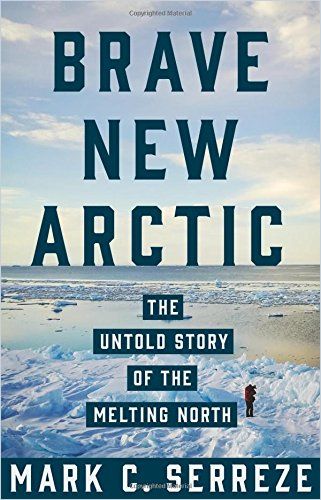
Given prospects of increased shipping and extraction of resources, how much busier will the Arctic become, and will this lead to conflicts?
Mark C. Serreze
Jeff Goodell, author of The Water Will Come, shows the many ways in which conflict is already here: Russia has already planted its flag on the seafloor beneath the North Pole.
In Rising, author Elizabeth Rush details the devastating effects of the rising tides on coastal wetlands, which act as a natural buffer against intensified hurricane activities caused by climate change. But wetlands also provide crucial habitat for migrating birds. The salt water is rising too quickly for wetlands flora to adapt by retreating naturally. As the flora dies, the fauna leave.
People will also have to face retreat from the coasts. The authors of Retreat from A Rising Sea spell out what the scientific data show: Forty percent of the planet’s people live on coastal lands and will have to move. Cities like Miami and Mumbai and dozens in between will eventually lose their fight with the ocean.
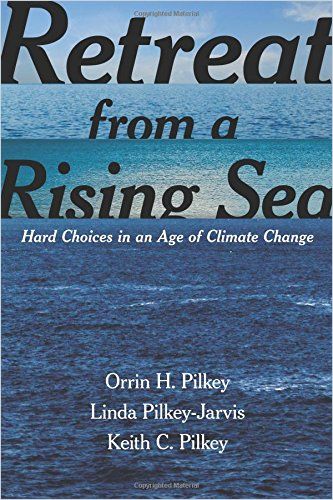
Yet in the United States, perverse economic incentives such as federally guaranteed flood insurance plus politicians in beset states who deny the reality of climate change encourage continued development on fragile coastline. When now-Senator Rick Scott was Governor of Florida from 2011-2019, he forbid the use of the phrase “climate change” in official communications.
“Water Water Everywhere, but Not a Drop to Drink”
Ironically, just as many countries struggle with the threat of too much water, they also must worry about dwindling access to fresh water. Everybody sees the global water crisis coming. Considering only 1% of the earth’s water is fresh water, and that water is essential for the daily survival needs of all the planet’s plants and creatures, all 7.9 billion humans included, you’d think ensuring access to freshwater for everybody would be problem number one to solve on international to-do lists. You might reasonably think there’s international action on agreements guaranteeing everyone has access to water. But you’d be wrong. Because while scientists have been quantifying the problem and delivering warnings to the public, corporations and their investors have been maneuvering into place for decades to exert greater control over the most precious limited resource known to man.
In The Price of Thirst, Karen Piper estimates that by 2025, 39% of Americans will pay a private company for their water. According to the UN, one billion people worldwide lack access to fresh water.
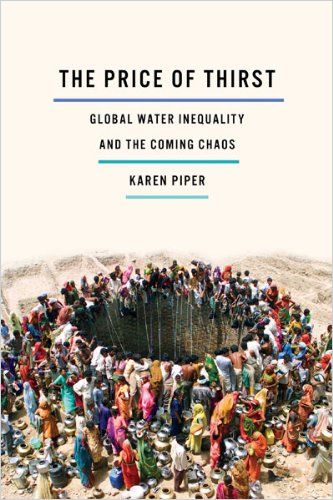
A small number of multinational corporations are banking on the fact that the world is entering a global water crisis.
Karen Piper
It is World Bank policy to force lendee nations – including India, Iraq, Egypt and South Africa – to privatize their water resources as a contingency of funding. Private companies get paid to extract, treat increasingly polluted freshwater (often due to water run-off from development or agriculture polluting aquifers) and deliver access to people and business. Taxpayers usually subsidize these infrastructure projects – US taxpayers paid $63 billion to private companies after the Iraq War for water infrastructure that was never subsequently completed and vastly inferior to what was there before the war – and ratepayers sustain them. In many cases, these projects leave people worse off for water access than they were before. When communities protest by not paying their water bills, the companies shut off their water.
The World Bank also favors large dam projects. In India, these block silt from reaching the ocean, depleting Antarctic krill populations, which disrupts the food chain in the sea. It’s more common these days to thoroughly weigh out the environmental pros and cons of dam projects, but as humans become desperate for water, no doubt those balances will change.
Water, a Hot New Commodity
A Business Insider headline reads “Water futures set to join the likes of gold and oil and trade on Wall Street for the first time ever,” in an article heralding the market potential of water. The idea is that marketizing water will help signal scarcity and spread risk. Except unlike oil or gold, water is essential to biological life. It is not just another commodity. In California, farmers routinely trade in water futures. The state sells water to farmers who, during drought, sell it back to the state – that is, the state’s taxpayers – for profit.
The so-called free market in water in California is…an intensely negotiated (and corrupted) system set up between the state, the US government and San Joaquin agribusiness.
Karen Piper
For Piper, privatization is not a viable solution. However, the Hamilton Project argues its virtues in its report “Shopping for Water.” Markets offer the most flexible way for competing interests to optimize declining resources, they say. The majority of the world’s largest companies worry about the threat water scarcity poses to their businesses. Tech companies, for instance, utilize enormous amounts of water and electricity – often as much as medium-sized cities – to air condition their server farms.
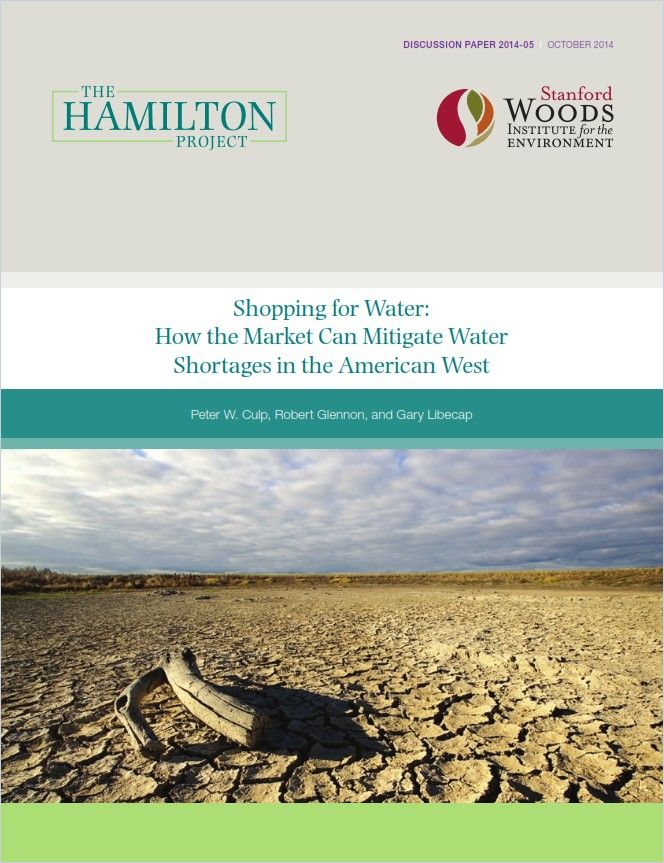
Hedging bets is a dangerous game as water insecurity becomes the norm, and not just in poorer countries. Reservoirs in western states are at historically low levels and expected shortages this year will likely trigger the first-ever mandated cuts in water supplies for states that share the Colorado River.
Colorado River Status: It’s Complicated
The Colorado River in the western United States provides seven states with fresh water. Through dams, reservoirs and aqueducts, the Colorado River essentially hydrates the desert. Author David Owen explains in Where the Water Goes that early predictions of how much extraction the river could support were overly optimistic. These set the region up for perpetual dispute over water rights – legal theory, or “paper water,” versus the actual, flowing, “wet water” of the Colorado.
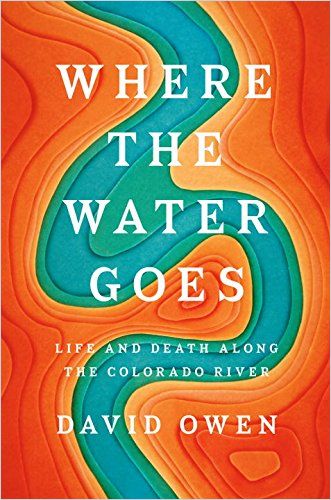
Water rights predictably spark disputes along international borders as well, for instance between Ontario, Canada and Detroit, Michigan, both located along the Detroit River, not to mention along the Rio Grande, which is a trickle by the time it flows into the Gulf of Mexico due to allocations along the way.
Traditional economists tend to undervalue goods that are hard to pin a price on, like air quality, water quality and the future of civilization – those pesky ‘externalities’.
David Owen
No city in the United States supplies 100% of its own water; people, businesses and place are interdependent. Energy and industrial uses along the Colorado already exceed demand. Urban density works better from a conservation viewpoint than sprawling development. Environmentalists encourage thoughtful irrigation for agribusiness, although others argue, paradoxically, that irrigation efficiency (IE) systems can be detrimental, and that water savings are often diverted to growing more water-hungry plants.
Decision makers typically have not known or understood the importance of basin-scale water accounting or of the behavioral responses of irrigators to subsidies to increase IE.
R. Quentin Grafton, J. Williams, C. J. Perry, F. Molle, C. Ringler, P. Steduto, B. Udall, S. A. Wheeler, Y. Wang, D. Garrick and R. G. Allen
Better water accounting methods, bolstered by AI and a coordinated internet-connected technological system, combined with rigorous and transparent regulatory oversight is the path forward for reducing waste and overallocation.
As for energy needs, it takes five gallons of water to make one gallon of gasoline, and nearly 1,000 to make a gallon of corn ethanol. However, “greener” technologies also bring hazards: Transitioning to electric vehicles brings the headaches that come with mining lithium.
Technology to the Rescue?
Science writer Robert F. Service is also thinking about water in the desert. In his article “Crystalline Nets Snare Water and Make Fuel from Thin Air,” Service reports on advances made with metal-organic frameworks (MOFs). He describes a not-yet-scalable microwave-sized solar-powered machine capable of drawing up to eight liters of water per day from the atmosphere.
A metal-organic framework (MOF)…acts like a sponge: It sucks water vapor out of air, even in the desert, and then releases it as liquid water.
Robert F. Service
In the roughly 30 years since global talks about climate change and what to do about it formally began, countries have taken few meaningful steps to head off disaster. At this point, some mix of conservation policy and technology is the best bet to ensure access to fresh water for future generations. The authors of “Geoengineer Polar Glaciers to Slow Sea-Level Rise” propose in Nature magazine several large-scale engineering projects to forestall glacial melt in Greenland and the Antarctic, giving countries more time to prepare for the inevitable sea level rises.
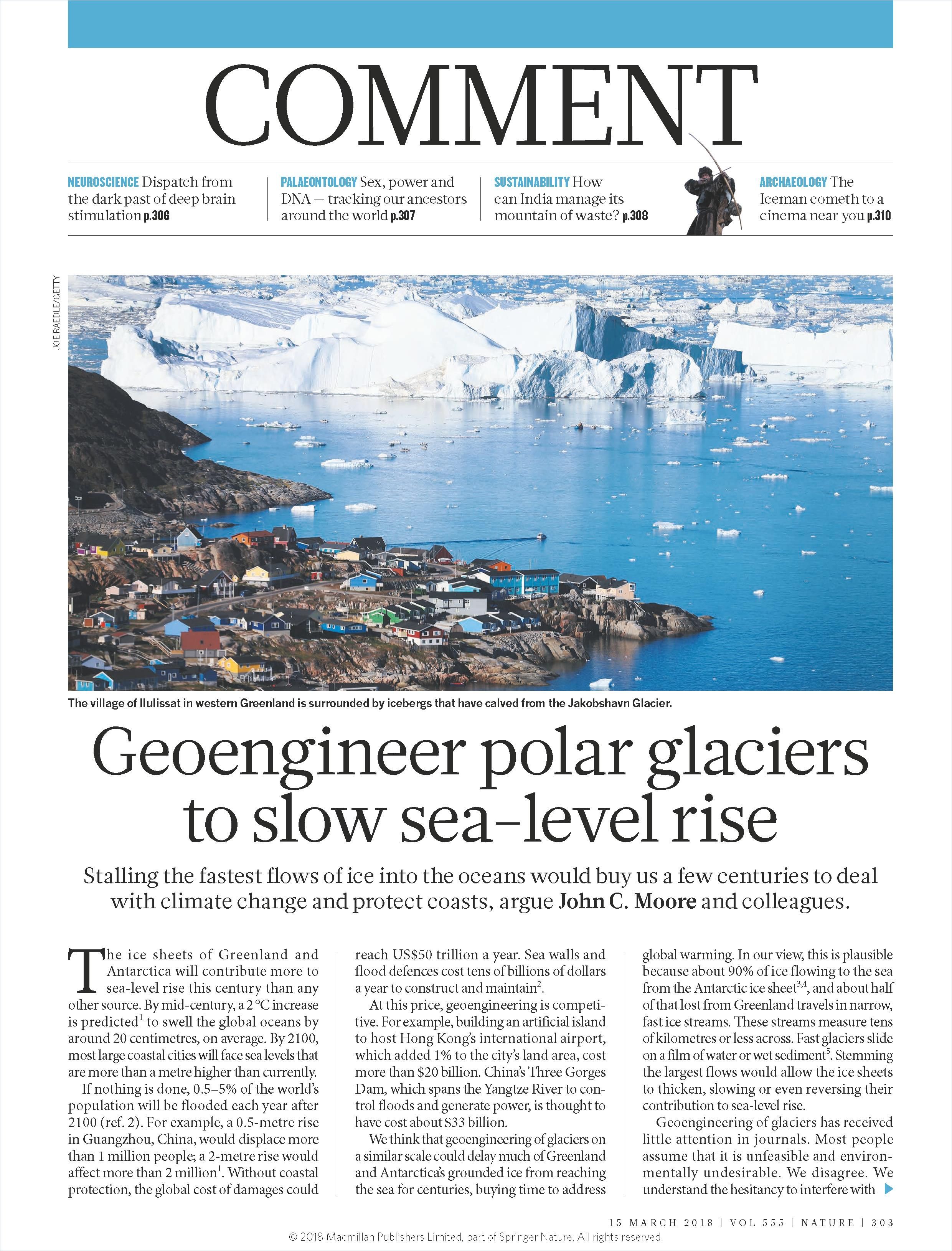
Other scientists, also writing for Nature, caution about hail Mary projects like seeding the ocean with iron to slow climate change without more certitude about potentially catastrophic repercussions. They urge scientifically rigorous and transparent international cooperation for researching and implementing technologies that will alter weather for the planet.
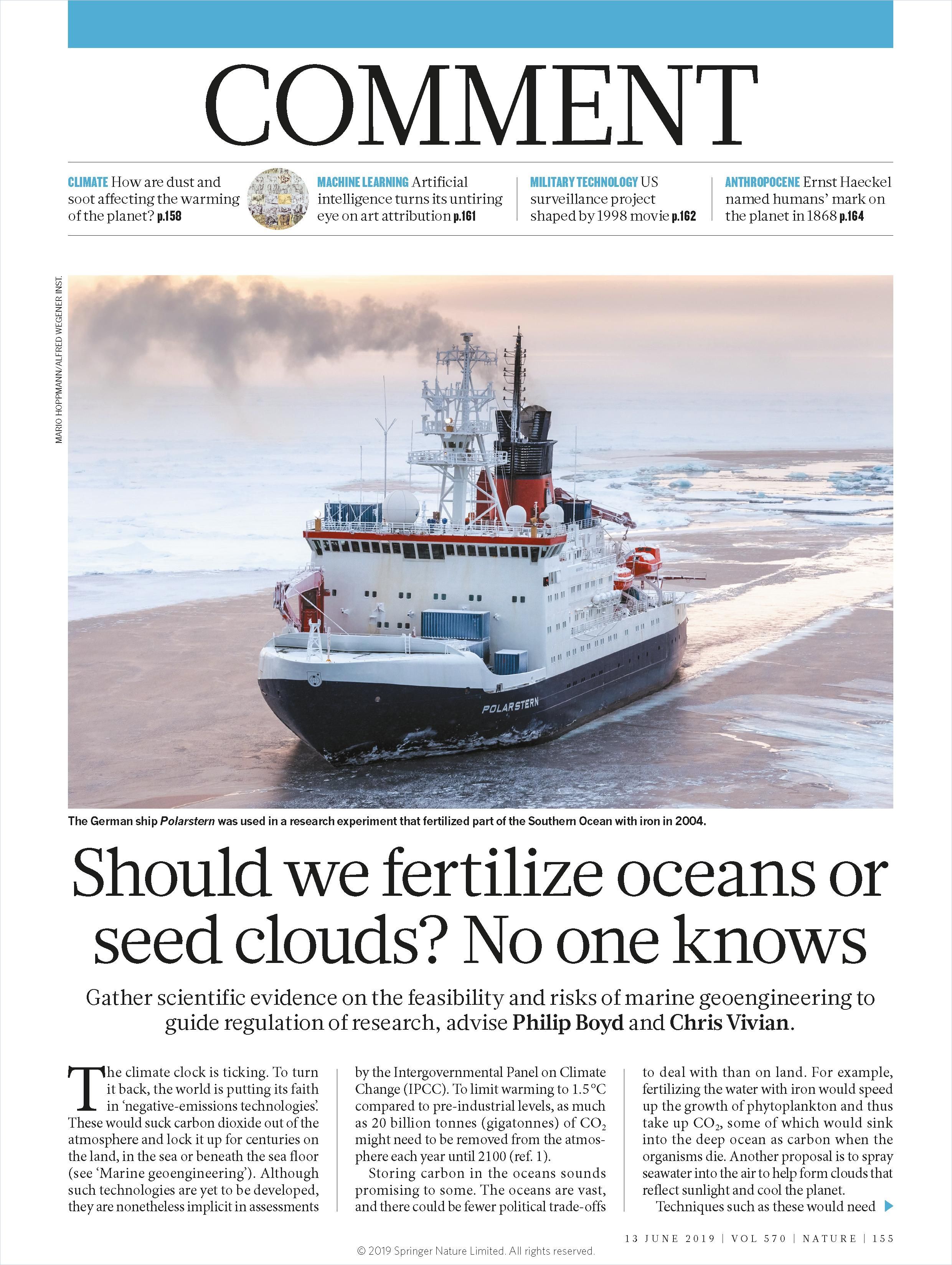
In “How to Solve the Global Water Crisis” journalist Scott Moore argues that when it comes to solving climate change problems, the scarcest resource globally is political will.
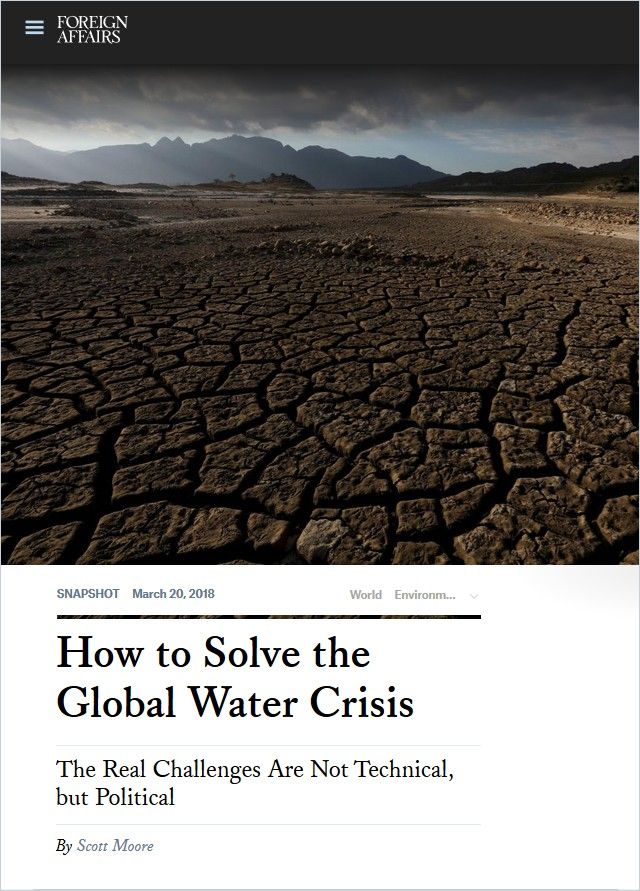
Right now, the world still has options to mitigate the worst effects (though not all effects) of climate change, and to find an equitable solution to what everyone who’s paying attention knows is a looming global water crisis. These solutions as well as AI and Internet of Things-enabled conservation methods offer real hope for the future. Doing nothing – like everything related to climate change – is no longer an option. Whatever future governments, corporations and investors envision for water, it won’t matter much once all the glaciers melt and time runs out to get it right.
